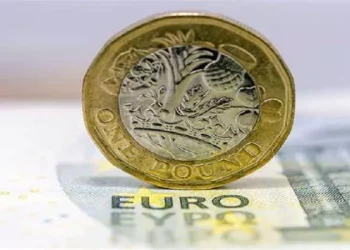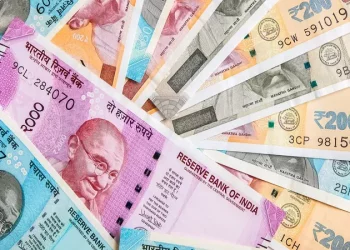In the world of international finance and trade, the U.S. dollar (USD) stands as the dominant global currency, influencing economies and markets worldwide. The question of why the USD is the global currency has intrigued financial analysts, policymakers, and economists for decades. Several factors contribute to its dominant position, spanning historical, economic, political, and even technological domains. This article delves into these key reasons and explores the underlying mechanisms that have established the U.S. dollar as the most widely used currency in global transactions.
1. Historical Context and the Bretton Woods System
To understand why the U.S. dollar is the global currency, it’s crucial to trace its origins. The USD’s rise to prominence can be traced back to the end of World War II and the establishment of the Bretton Woods system in 1944. In the aftermath of the war, much of Europe’s economy was devastated, and the United States had emerged as the world’s largest and most powerful economy. At the Bretton Woods Conference, representatives from 44 Allied nations agreed to create a new global financial system that would stabilize international trade and finance.
Under the Bretton Woods system, the U.S. dollar was pegged to gold at a fixed rate of $35 per ounce. Other currencies were then pegged to the U.S. dollar, essentially making the dollar the primary reserve currency. This arrangement provided a solid foundation for the USD to gain prominence in global trade. The U.S. dollar was not only backed by the strength of the U.S. economy but also by its convertibility to gold, which further reinforced confidence in its stability.
However, in 1971, President Richard Nixon ended the gold standard, but by then, the U.S. dollar had already cemented its position as the global reserve currency. Despite the collapse of Bretton Woods, the dollar continued to dominate because of the size and strength of the U.S. economy, its extensive use in global trade, and the fact that many countries held USD as part of their foreign exchange reserves.
2. Economic Strength and Stability
The strength and stability of the U.S. economy are fundamental to the USD’s position as the global currency. The United States has the largest economy in the world, with a GDP surpassing $26 trillion in 2023. This immense economic power gives the U.S. significant influence in global trade and finance. The scale of the U.S. economy provides a level of confidence that other economies struggle to match. This has created an environment where the USD is not only a stable store of value but also a preferred medium of exchange in global markets.
The U.S. government’s commitment to maintaining a stable economy, backed by sound fiscal and monetary policies, also helps ensure the dollar’s stability. The Federal Reserve, as the central bank of the U.S., plays a crucial role in managing inflation and ensuring the long-term stability of the dollar. This ability to maintain the purchasing power of the USD over time has made it an attractive currency for individuals, businesses, and governments around the world.
Moreover, the depth and liquidity of the U.S. financial markets, particularly the bond and equity markets, make the USD a secure investment. U.S. Treasury bonds are considered one of the safest investments globally because of the full faith and credit of the U.S. government. As a result, many countries and institutions hold large quantities of U.S. dollars in their reserves, further solidifying its status as the global currency.
3. Global Trade and the U.S. Dollar
One of the most significant reasons for the dominance of the U.S. dollar is its role in international trade. The dollar is the preferred currency for conducting transactions across various industries, including commodities, energy, and raw materials. For instance, oil, the world’s most traded commodity, is priced in U.S. dollars. This practice, known as the “petrodollar” system, ensures that countries must hold USD to purchase oil and other key commodities.
The prevalence of the USD in global trade can be attributed to the fact that many countries rely on the U.S. dollar for invoicing, pricing, and settling international transactions. This widespread use of the USD in global commerce has led to the creation of a self-reinforcing cycle. As more countries conduct business in USD, demand for the currency increases, which in turn helps maintain its value and liquidity. This dynamic has made it difficult for other currencies to challenge the dollar’s dominance in global trade.
The U.S. also benefits from its deep integration into global supply chains and the dominance of U.S.-based multinational corporations. Companies like Apple, Microsoft, and Coca-Cola operate in virtually every country, conducting transactions in U.S. dollars and contributing to the global circulation of the currency. The extensive use of the dollar in international business and trade makes it the default choice for most global transactions, creating a network effect that perpetuates its dominance.
4. Financial Markets and the U.S. Dollar
Another crucial factor in the global status of the USD is the size, liquidity, and accessibility of U.S. financial markets. The U.S. stock market, bond market, and other financial institutions are the largest and most liquid in the world. Investors worldwide buy and sell U.S. assets, such as stocks, bonds, and real estate, in U.S. dollars. This global demand for U.S. assets results in the continual flow of dollars into and out of the United States, further embedding the USD in the global financial system.
The U.S. dollar’s role as the primary currency for denominating debt is also important. Most international bonds are issued in USD, and many emerging market countries borrow in U.S. dollars. This means that even countries with no direct economic ties to the U.S. are heavily reliant on the dollar for their own financing needs. The dollar’s continued dominance in the global bond markets is supported by the fact that U.S. debt is considered among the safest investments worldwide.
Additionally, the U.S. financial system is highly developed, with robust regulatory frameworks that offer investors confidence and security. The role of the U.S. dollar in the financial markets is further reinforced by the global dominance of U.S.-based financial institutions such as JPMorgan Chase, Goldman Sachs, and Citigroup, which have a vast presence in international markets.
5. Political and Military Power
The political and military power of the United States has also played a significant role in the global adoption of the U.S. dollar. As the world’s leading military power, the U.S. has established itself as the dominant force in international politics and security. The presence of U.S. military bases in key regions around the world, combined with its influence in international institutions like the United Nations, the International Monetary Fund (IMF), and the World Bank, has helped reinforce the role of the U.S. dollar in the global economy.
The United States’ geopolitical influence ensures that many countries remain aligned with U.S. interests, both economically and politically. In addition, U.S. sanctions, often imposed on countries that do not comply with U.S. policies, can further reinforce the global importance of the dollar. Since much of the global financial system is denominated in USD, countries that wish to engage in international trade and finance often have no choice but to adhere to U.S. regulations, further embedding the dollar’s dominance.
6. The Role of Central Banks and Foreign Exchange Reserves
Central banks around the world hold large reserves of U.S. dollars as part of their foreign exchange reserves. According to the International Monetary Fund (IMF), the U.S. dollar accounts for about 59% of global foreign exchange reserves. These reserves are used by central banks to stabilize their own currencies and facilitate international trade.
The practice of holding U.S. dollars as reserves is a reflection of the dollar’s stability and liquidity. Central banks use these reserves to intervene in the foreign exchange markets, manage exchange rates, and settle international obligations. The widespread holding of U.S. dollars by central banks further ensures the dollar’s continued dominance in global finance.
7. The U.S. Dollar in the Digital Age
In recent years, the rise of digital currencies and advancements in technology have introduced new challenges and opportunities for the U.S. dollar’s global dominance. Cryptocurrencies like Bitcoin and Ethereum have raised questions about the future of traditional fiat currencies, but the U.S. dollar remains resilient. The continued growth of digital payment systems, such as PayPal, Venmo, and digital wallets, often utilizes the U.S. dollar as the primary unit of exchange.
Additionally, the U.S. Federal Reserve is actively exploring the possibility of creating a Central Bank Digital Currency (CBDC), which could further solidify the U.S. dollar’s role in the digital economy. The ability of the dollar to adapt to technological changes ensures that it remains a key player in the global financial system.
Conclusion
The U.S. dollar’s position as the global currency is a result of a combination of historical, economic, political, and financial factors. From its origins in the Bretton Woods system to its current dominance in global trade, finance, and reserves, the USD has become entrenched as the world’s most important currency. The strength of the U.S. economy, the size and liquidity of its financial markets, and its geopolitical influence have all contributed to this dominance. Despite challenges from emerging markets and digital currencies, the U.S. dollar remains the backbone of the global financial system. As long as the U.S. economy continues to thrive and adapt to changing global dynamics, the dollar’s position as the world’s currency is likely to remain secure for the foreseeable future.
Related Topics:




























